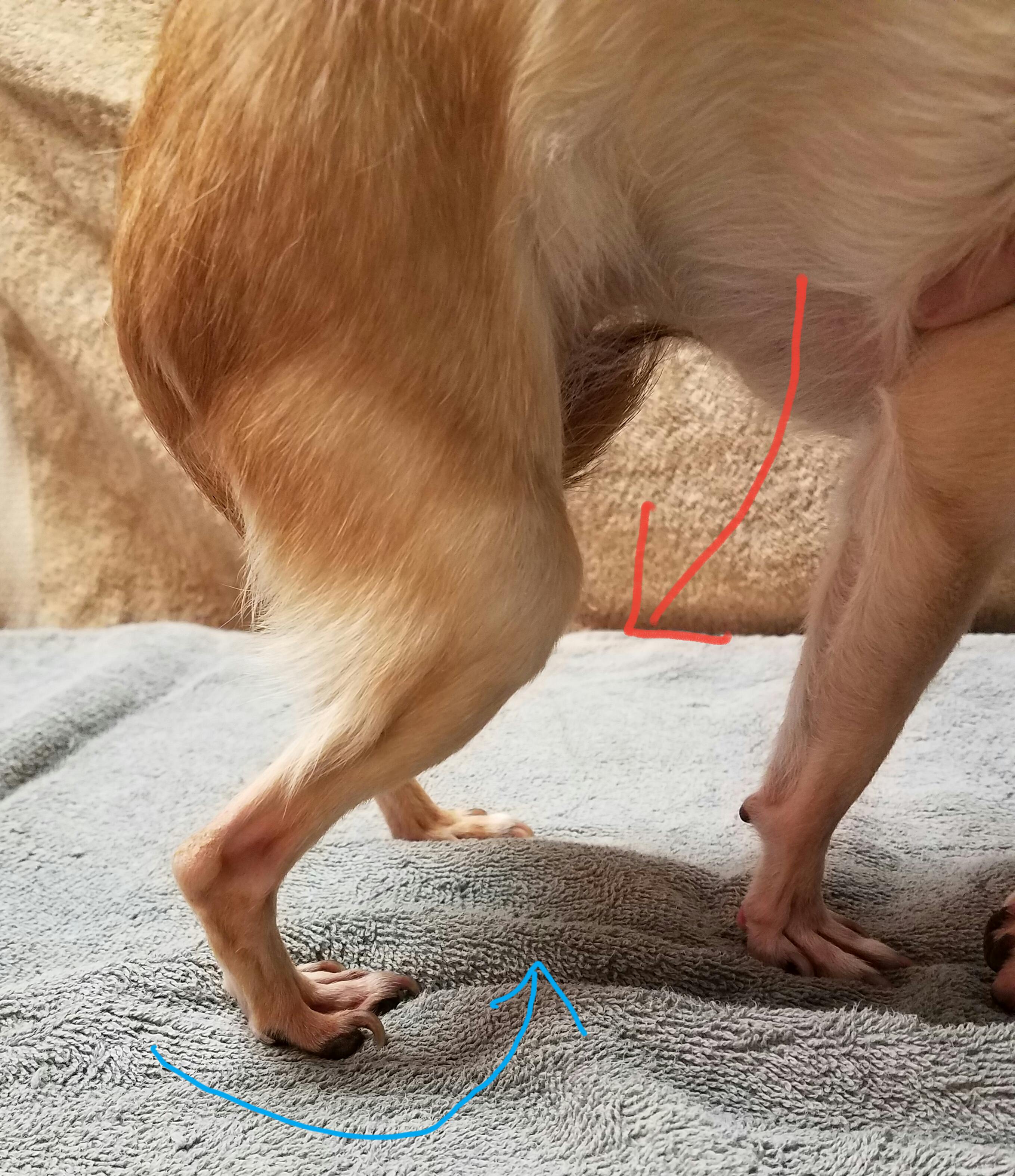Chihuahuas are extremely popular. They are all the fun of a bigger dog rolled up into a portable package! When our ancestors were breeding to get these tiny canines, some problems came along for the ride.
Every breed has its issues. These are known as breed associated disorders. Chihuahuas are no different. Like many distinctive breeds, many of their problems came along with their specific characteristics. Very few of these types of issues are exclusive to a single breed.
Three issues are the most common for Chihuahuas seen in my practice.
Hydrocephalus
Chihuahuas have a very noticeable face and head. Some refer to them as “apple head”, but what seems really cute and infantile can be a problem. Hydrocephalus, literally water on the brain, is a problem seen often in Chihuahuas. Hydrocephalus occurs when there is cerebrospinal fluid (CSF) in the skull, putting pressure on the brain and associated structures. The cute baby face and large head can be a sign that there are abnormalities associated with the normal drainage and circulation of CSF, allowing it to build up in abnormal ways, increasing the intracranial pressure and damaging the sensitive brain.

Periodontal Disease
Periodontal disease is disease characterized by infected and loose teeth and foul breath. Eventually the teeth become loose and fall out. You might not think that your dog cares about her smile, but most certainly she cares about how bad those teeth hurt while they loosen, erode the jaw bone and finally fall out. Chihuahuas in my practice seem to usually have bad teeth and adults are often already missing some by the time I see them. If you have a puppy, ask your veterinary professional to show you how to keep the teeth healthy for life. If you have an adult Chihuahua, make sure that you always have the preventive dentistry recommended by your veterinarian. This will include regular dental cleanings under anesthesia and a comprehensive at-home program (tooth brushing and dental chews or rinses).
Patellar Luxation

The patella is actually the “knee cap”, but a dog’s knees aren’t quite like ours. Because of the build of their legs, their knees seem to be higher on their legs than a human’s. In the photo above, the red arrow marks the area of the patella and the blue arrow shows the rotation of the dog’s leg because her patella has slipped medially (to the inside) which alters the alignment of her entire lower leg.
A patella should reside in the center of the leg and normally stays in place inside a groove on the femur. In some dogs (especially tiny ones), the groove seems to be more shallow and allows the patella to slip out of place. There are probably other factors that contribute to this issue, but it is certainly a breed associated disorder for toy breeds. Your veterinarian can examine your dog and characterize the type of luxation, as well as provide you with advice for how to manage the problem. Left untreated, patellar luxation can lead to crippling osteoarthritis.
These are not the only breed associated disorders found in Chihuahuas and the best course of action is always to have a good relationship with your veterinarian for the life of your dog. Chihuahuas are fun and can be very long lived, especially if you have a good partnership with your veterinary team because after you, they are the experts on your specific dog.
Do you want to know more about Chihuahuas and other animals? Follow me on Facebook by clicking here.
